План-конспект уроку "British Artists"
Famous British Artists
Grade: 7
- to organize students’ creative work in expanding their vocabulary;
- to develop students’ communicative skills in speaking, reading and listening;
- to develop students’ critical thinking skills and creative imagination;
- to provide students with information and to widen their knowledge about art.
Equipment: SB “Solutions Pre-intermediate 2nd Edition ”, pictures, hand outs, a smart board, a Power Point presentation.


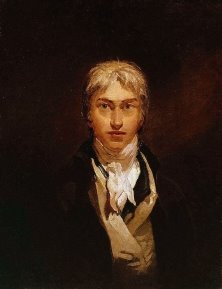
- Greeting
Teacher: Today we’ll speak about the golden age in the British painting. We’ll visit the most famous art museums of the world and see the paintings of the most outstanding British artists.
- Warming-up
Teacher: Look at the pictures and remember genres of painting. What are they?
Students’ answers: landscape, seascape, still-life, black-and-white drawing, portrait, history painting, genre painting.







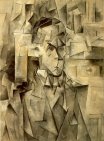



- Speaking
Teacher: You see some pictures are painted in a very unusual style. What style is this?
Students’ answer: cubism
Teacher: Do you remember the name of the artist who painted in cubism?
Students’ answer: Pablo Picasso
Teacher: Yes, and we know some interesting facts from his biography “Solutions Pre-intermediate 2nd Edition ”, Unit 7. Let’s remember them. The dates and words will help you.

Students’ possible answers:
- Pablo Picasso was born in Spain in 1881.
- His first word was ”pencil”
- When he was 13 he started going to art school.
- When he was 16 he quit it.
- At the age of 19 he moved to Paris.
- He was married twice and had 4 children.
- He created more than 50000 paintings and drawings.
- He died when he was 91.
Teacher: Let’s look at some of his paintings.
What are the people wearing?
What are they doing?
Do you like the painting? Why? Why not?

- Vocabulary practice:
Teacher: Let’s remember the adjectives we use to describe paintings and our feelings about them.
Paintings: Amazing, incredible, fascinating, unusual, bright, wonderful, dark, realistic, boring, relaxing, light.
Feelings: Bored, depressed, excited, amazed, fascinated, relaxed.
Teacher: Describe the picture and your feelings and emotions about it.

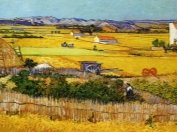
Students’ possible answers: This painting is (...).
When I look at it I feel (...).
- Grammar
Teacher: Let’s remember another famous artist Salvador Dali. (“Solutions Pre-intermediate 2nd Edition WB, Unit 7”)
Read the text and put the verbs in brackets in Past Simple
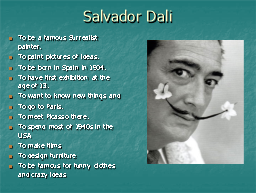
- Role Play
Teacher: Let’s start our tour. The first city we’re going to is Paris. And the first museum is Louvre.
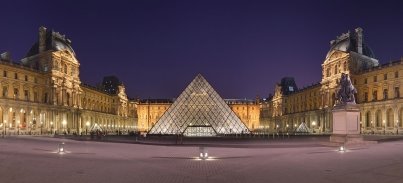
Who wants to call to the reception and find out the information? And who wants to be the clerk in the museum?
Students get the cards and make up phone dialogue “customer-clerk”
|
Clerk Louvre Museum, PARIS
Opening hours : Open every day except Tuesday Monday – Sunday 9 am – 10 am
Wednesdays and Fridays – work at night
Admission: Adults: $16 Children and students: Free Location: metro station Louvre Museum
|
Customer
|
- Listening
Teacher: So, we’re in Louvre and going to the exhibition of the famous British artist John Constable. Listen to our guide and answer the questions?
- What genre of painting did Constable prefer?
- Was he well-known in Great Britain?
Student 1. John Constable is one of the most famous English landscapists. Though his approach to art was realistic, his individuality of style and interest in sentiment made him part of the Romantic period in which he lived.
The son of a mill owner, he showed taste for sketching at an early age. He was one of the first artists to paint outdoors, in order to observe the change of light and color in nature.
In 1800 Constable entered the Royal Academy School, exhibiting his works two years later. He developed his style in painting, but his fame was slow to arrive, and he had to paint portraits to earn his living.
In 1819 he was made an associate of the Royal Academy,.
In 1824 at the age of fifty, in company with some of his country men, he showed a number of landscapes at the Paris Salon. And there he was awarded a gold medal for one of his landscape.
In England, however, there were few people who appreciated his work as a landscapist, and it was only in 1829 that he was elected in the full membership of the Royal Academy.
Unlike the Dutch who preferred sunny landscapes it was the cloudy, rainy days that Constable painted.
Teacher: Let’s describe one of his fantastic landscapes.

|
What is in the picture?
In the picture I can see ... Say what is happening with the present continuous
The man is ...ing Where in the picture?
At the top/bottom of the picture ... If something isn’t clear
It looks like a ... |
- Role Play
Teacher: Now we’re going to New York to Metropolitan Museum of Art.

Let’s call there.
Dialogue “customer-clerk”
|
Clerk METROPOLITAN MUSEUM of Art, NEW YORK
Opening times: Open 7 Days a Week Last entry is at 4:00 p.m. Admission: Adults: $25 Students: $12 Children: Free
Location: 1000 Fifth Avenue |
Customer |
- Listening
Teacher: We’re going to the exhibition of another famous British artist Joseph Turner.
Student 2. Joseph Mallord William Turner was born above his father's barber shop in London in1775. Joseph began to sketch pictures when he was a young boy. He enjoyed drawing outside pictures especially buildings. Some of his drawings were sold from his father's shop.
When he was just fourteen years old he began to attend the Royal Academy of Art in London. He continued to sketch and work with water colors. Many of his sketches appeared in magazines.
Turner began to paint in oil at the age of 21. "The Fishermen at Sea" apparently was the first oil-painting His love for mountains was great, but it was the sea that remained his life-long passion. He had a splendid visual memory.
He loved painting ships, men connected with the sea, fishermen and sailors at work.
"Calais Pier" is one of his greatest creations of the early period, showing Turner as a draughts-man of human beings. All the figures are living individuals.
His greatest masterpieces were "Windsor", "The sun rising through vapor". The year 1829 was a turning point in his career. It was then he began to adapt his final and in many ways most original style in colours.
Turner began to use in oil splendid colour schemes with which he had experimented in watercolours. Turner’s talent and capacity for work made him one of the most outstanding English artists.
After-listening task: True or False
1. Joseph Turner was born in the family of barber.
2. He began to attend the Royal Academy of Art when he was 15.
3. He loved painting historical events.
4. His pictures are painted in oil only.
5. His first painting in oil is called Fishermen at Sea
- Role Play
Teacher: And our last destination is British Museum in London.

Let’s call there.
Dialogue “customer-clerk”
|
Clerk British Museum, London Opening times: opens daily 10 – 17.30 Fridays until 20.30 Admission: free for everybody LOCATION: Great Russell Street
|
Customer |
- Listening
Teacher: We’re going to the exhibition of another famous British artist Thomas Gainsborough .
Student 3. Thomas Gainsborough was born in England and began drawing when he was very young. He started taking lessons at the age of 13.
Gainsborough is noted for his portraits, but before he started doing portraits he was a painter of landscapes. He still included landscapes even in his portrait painting. In the painting on the left of Mr. and Mrs. Andrews the landscape is as equally important as the subjects. Evidently they are the landowners, but not the ones who work the land.
The following picture is Sarah Siddons who was a famous actress during that time. Gainsborough was one of the artists she commissioned to paint her portrait. It is said he had trouble getting her nose to look just right.
He was a musician who played the viola. He once said, "I paint portraits to live, landscapes because I love them, and music because I can't leave it alone".
He brought objects into his studio to include in his landscapes. Once he used a head of broccoli as his model to represent woods in a background.
He painted many pictures in his lifetime; more than 500 paintings. About 200 of these were paintings of people. He became wealthy because the rich people wanted him to paint pictures of their families. Gainsborough was noticed by King George III who asked him to paint the royal family.
The painting of The Blue Boy is perhaps one of the most well known works by Gainsborough. It is thought it is a picture of Jonathan Buttall, who was the son of a wealthy hardware merchant. He painted it over another painting he had already started to paint.
After-listening task: Choose the correct answer.



Describe the painting

- Final Quiz
Teacher: Now we know three great British artists. Match their names with the pictures they created

- Summarizing
Teacher: It's high time to sum up our results. I like the way you worked - you were creative and bright, but I'd like to know if you were attentive today. So, I have prepared a quiz for you.
Guess the name of the famous artist
John Constable (1), Joseph Turner (2), Thоmas Gainsborouqh (3), Pablo Picasso (4), Vincent Van Gogh (5), Salvador Dali (6), Claude Monet (7)
- Whose first word was “pencil”
- Who sold only one painting when he was alive
- Who is famous for funny clothes and crazy ideas
- Who is one of the first impressionists of the 19th century
- Who is famous British landscapist of the 18th century, but not well received in England during his lifetime
- Who painted The Blue Boy
- Who made films and designed furniture
- Who used to live in the south of France
- Who was born in 1775 in the family of barber
- Who is famous British seascapist of the 18th century
- Who often changed his style of painting
- Who had his first exhibition at the age of 13
- Who used to live in the houseboat
- Who is the great portraits master of 18th century in Britain
- Who suffered from mental illness
- Who included landscapes in portraits
- Who cut off part of his own ear
- Whose landscape 'The Hay Wain' won a gold medal at the Salon in Paris.
- Who is the greatest Surrealist painter of the 20th century
- Who is the greatest cubist of the 20th century
Home assignment: describe the following paintings.

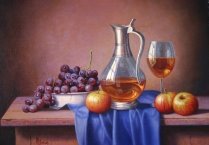
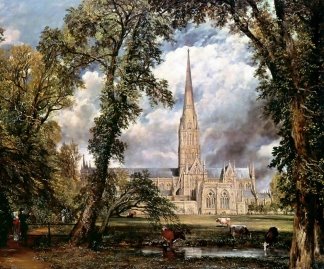


про публікацію авторської розробки
Додати розробку
